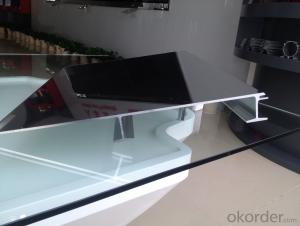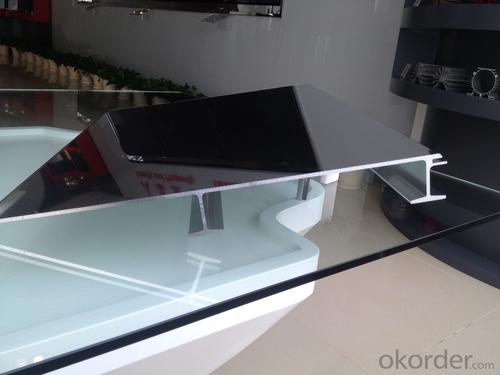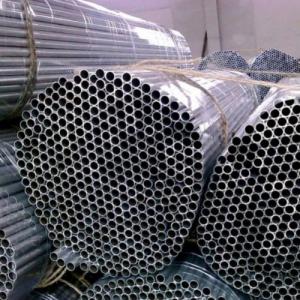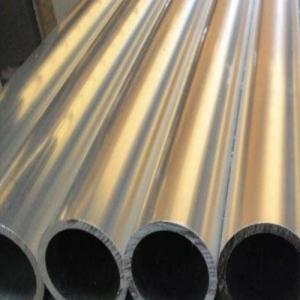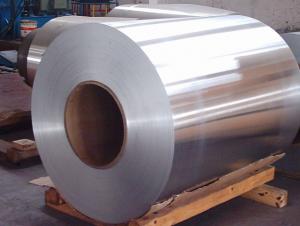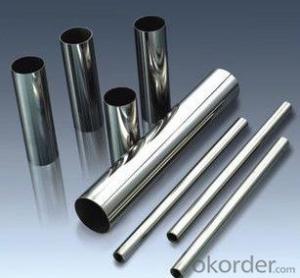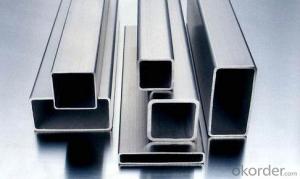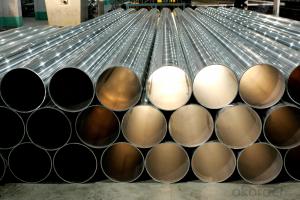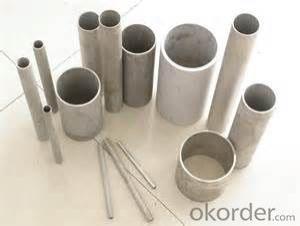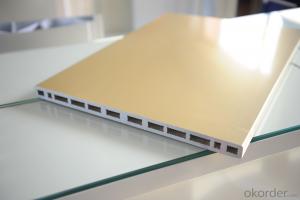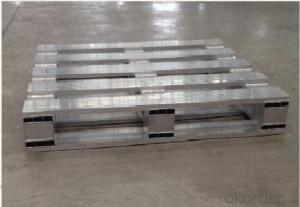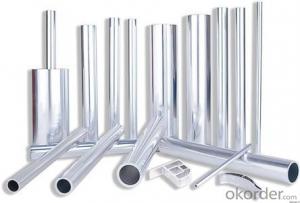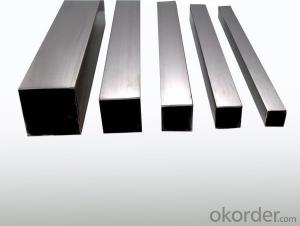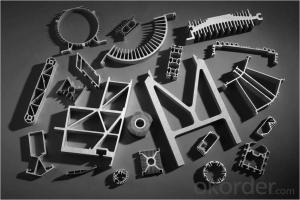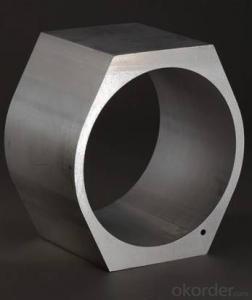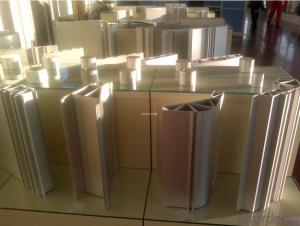Aluminum Ribbed Plate Pipes
OKorder Service Pledge
OKorder Financial Service
You Might Also Like
We are the largest aluminum profilemanufacture in
Material | Alloy Aluminum 6063,6061,6005,6082 or customer nominated |
Temper | T3, T4, T5, T6 and other |
Surface | Anodize, electrophoresis, powder coating, PVDF coating, wood grain painting, etc. |
Colour | Any colour based on Standard Germany RAL Mark |
Length | Not more than 16 meters |
Good Package | Inner plastic film /outside carton/wooden pallets |
Payment Method | T/T, L/C, etc |
Delivery Time | Normally 2-4 weeks, Delivery time can be consulted. |
Press Machine | 500-12500 tons all together 93 press lines. |
Fabrication | 1.Shipbuilding 2. Drilling; 3. Bending; 4. Cutting; 5. etc. |
Certificate | ISO/TS 16949,DNV,IRIS,CCS,AFA,etc. |
Dies | 1. Using our dies, no fee; |
2. Using customer drawing, opening dies, usually about 5~50 tons then the dies cost can be refunded. | |
3. Die cost is negotiable base on the order quantity | |
Capability | Annual output 800,000 tons |
- Q: Can aluminum tube and stainless steel pipe be welded directly?
- If the direct use of other auxiliary welding material can be, but I would also like to know whether the current technology can use laser welding, aluminum and stainless steel?
- Q: What are the common insulation materials used for aluminum pipes?
- The common insulation materials used for aluminum pipes are fiberglass, foam insulation, and rubber insulation.
- Q: 6063, aluminum pipe bending performance, hardness of the best value?
- Three is energy-saving advantages: air conditioner indoor machine and outdoor machine connection pipeline, heat transfer efficiency is lower, more energy saving, or, the better insulation effect, the more power saving.Four is the bending performance, easy installation and removal
- Q: How can the aluminum tube bending be processed and how to make manual bending equipment?
- How to make manual bending equipment?A guide wheel is additionally provided with a lever to apply the rod to rotate the force in the center of the guiding wheel.
- Q: I do not know compared with copper tube, durable, long time will appear trachoma?
- The best thing about a refrigeration pipe (household system) is a copper tube. They replaced the copper tubes with aluminium tubes because the aluminum tubes were cheap and the oldest refrigerators and freezers were all copper. Trachoma basically does not have unless the welding mouth is not welded well.
- Q: Do aluminum pipes require any special cleaning methods?
- Yes, aluminum pipes do require some special cleaning methods. Unlike other metals, aluminum is prone to corrosion and can easily become dull or tarnished over time. Regular cleaning is necessary to maintain the appearance and functionality of aluminum pipes. To clean aluminum pipes, it is important to avoid using abrasive cleaners or scrub brushes, as they can scratch the surface of the metal. Instead, a gentle cleanser or mild soap mixed with warm water can be used. Apply the solution to a soft cloth or sponge and gently wipe the surface of the pipes. For more stubborn stains or oxidation, a mixture of vinegar and water can be used. This acidic solution can help remove the stains and restore the shine of the aluminum. After applying the vinegar solution, rinse the pipes thoroughly with clean water and dry them with a soft cloth or towel. It is also recommended to use a non-abrasive metal polish or aluminum brightener occasionally to remove any stubborn stains or restore the shine of the pipes. However, it is important to follow the manufacturer's instructions and test the product on a small, inconspicuous area first to ensure compatibility and avoid any damage to the pipes. Overall, regular cleaning and proper maintenance are key to keeping aluminum pipes in good condition. By using gentle cleaning methods and avoiding abrasive materials, you can ensure that your aluminum pipes remain clean, shiny, and free from corrosion.
- Q: Can aluminum pipes be used for structural purposes?
- Yes, aluminum pipes can be used for structural purposes. Aluminum is a lightweight and corrosion-resistant material, making it suitable for a wide range of applications including structural components. Aluminum pipes are commonly used in construction, aerospace, automotive, and marine industries where strength, durability, and weight are critical factors. Additionally, aluminum pipes can be easily formed, welded, and machined to meet specific structural requirements. Overall, aluminum pipes offer a cost-effective and versatile solution for various structural applications.
- Q: Can aluminum pipes be used for gas transportation?
- Yes, aluminum pipes can be used for gas transportation. Aluminum is a lightweight and durable material that has excellent corrosion resistance. It is commonly used in various industries, including gas transportation, due to its ability to withstand high pressure and temperature conditions. Additionally, aluminum pipes are easier to handle and install compared to other materials such as steel. However, it is important to ensure that the aluminum pipes are properly coated or lined to prevent any interaction between the gas and the aluminum, as certain gases may react with the metal.
- Q: Are aluminum pipes suitable for drinking water applications?
- Yes, aluminum pipes are suitable for drinking water applications. Aluminum is a lightweight, durable, and corrosion-resistant material, making it an excellent choice for piping systems. It is also non-toxic and does not leach any harmful substances into the water. Additionally, aluminum pipes have a smooth surface that minimizes the accumulation of bacteria and impurities. However, it is important to ensure that the aluminum pipes used for drinking water applications comply with relevant industry standards and regulations to guarantee their safety and quality.
- Q: Are aluminum pipes suitable for industrial applications?
- Aluminum pipes prove to be a fitting choice for various industrial applications. They present a multitude of advantages that render them an exceptional option for different industrial environments. Firstly, the lightweight nature of aluminum facilitates easy handling and transportation, thereby enhancing the convenience of installation and maintenance. Moreover, aluminum pipes boast exceptional resistance to corrosion, making them ideal for scenarios where exposure to moisture or chemicals is a concern. Additionally, aluminum pipes exhibit commendable thermal conductivity, ensuring efficient heat transfer, and making them a suitable choice for temperature control-dependent applications. Lastly, their remarkable durability and prolonged lifespan minimize the need for frequent replacements. Consequently, the distinctive characteristics of aluminum pipes establish them as a reliable and cost-effective solution for industrial applications.
Send your message to us
Aluminum Ribbed Plate Pipes
OKorder Service Pledge
OKorder Financial Service
Similar products
Hot products
Hot Searches
Related keywords
